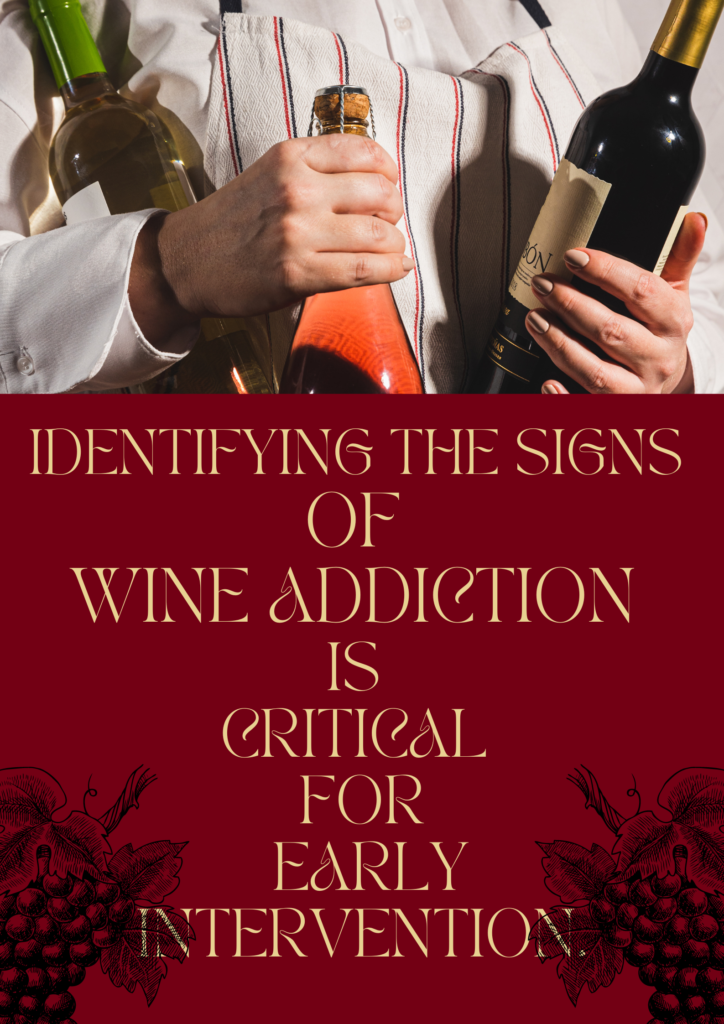
Wine, often celebrated for its cultural significance and touted for its potential health benefits, can also become a pathway to addiction. The transition from casual enjoyment to dependency is subtle, making it a slippery slope for many individuals. Understanding the nature of wine addiction, its consequences, and ways to address it is crucial for fostering healthier relationships with alcohol.
The Allure of Wine
Wine holds a unique place in many societies. It’s often associated with sophistication, celebration, and relaxation. Moderate consumption of wine has been linked to potential health benefits, such as improved cardiovascular health and enhanced social interactions. However, the perception of wine as a benign indulgence can obscure its potential for abuse.
The Path to Dependency
The progression from casual wine drinking to addiction is often gradual and insidious. It usually begins with occasional consumption during social gatherings or meals. Over time, the frequency and quantity of consumption may increase as individuals seek the relaxing effects of alcohol to cope with stress, anxiety, or other emotional challenges.
Several factors contribute to the risk of developing wine addiction:
- Psychological Factors: Individuals may use wine as a means of escaping negative emotions or coping with mental health issues.
- Social Influences: Peer pressure, social norms, and cultural acceptance of wine can encourage regular consumption.
- Biological Predisposition: Genetic factors can make certain individuals more susceptible to addiction.
Recognizing the Signs
Identifying the signs of wine addiction is critical for early intervention. Key indicators include:
- Increased Tolerance: Needing more wine to achieve the same relaxing effects.
- Cravings: Experiencing strong urges to drink wine.
- Loss of Control: Inability to limit or stop wine consumption despite intentions to do so.
- Neglecting Responsibilities: Prioritizing wine consumption over personal, professional, or social obligations.
- Withdrawal Symptoms: Experiencing physical or emotional symptoms when not drinking, such as anxiety, irritability, or tremors.
The Consequences of Wine Addiction
Wine addiction can have severe physical, psychological, and social consequences. Physically, excessive wine consumption can lead to liver damage, cardiovascular problems, and an increased risk of certain cancers. Psychologically, it can exacerbate mental health disorders, including depression and anxiety. Socially, addiction can strain relationships, hinder job performance, and lead to financial difficulties.
Seeking Help and Treatment
Overcoming wine addiction requires a comprehensive approach that addresses both the physical and psychological aspects of dependence. Key strategies include:
- Professional Counseling: Therapy can help individuals understand the underlying causes of their addiction and develop healthier coping mechanisms.
- Support Groups: Joining groups such as Alcoholics Anonymous (AA) provides a supportive community and shared experiences that can aid in recovery.
- Medical Intervention: In some cases, medication may be prescribed to manage withdrawal symptoms and reduce cravings.
- Lifestyle Changes: Adopting a healthier lifestyle, including regular exercise, balanced nutrition, and stress management techniques, can support long-term recovery.
Wine addiction is a serious issue that often begins innocently but can escalate into a significant problem. Recognizing the signs of addiction and seeking appropriate help is crucial for those struggling with dependence. By understanding the slippery slope of wine addiction, individuals can take proactive steps to foster healthier relationships with alcohol and reclaim control over their lives.